
Although some people might think of accountancy as being a rather dry profession, many of the world’s top accounting firms are proving just how wrong this idea can be. Their workplaces are frequently coveted by the financially minded and lead the pack in terms of prestige.
What’s more, these companies are also progressive in the move towards going green. With young, green-conscious employees determined to be environmentally responsible, such firms are taking bold stances for the benefit of Mother Nature. They’ve calculated the risk and seen that becoming eco-friendly is a great way to endear themselves to the public, attract the best staff, and distinguish themselves from their “grayer” counterparts.
10. Ernst & Young – Diegem, Belgium
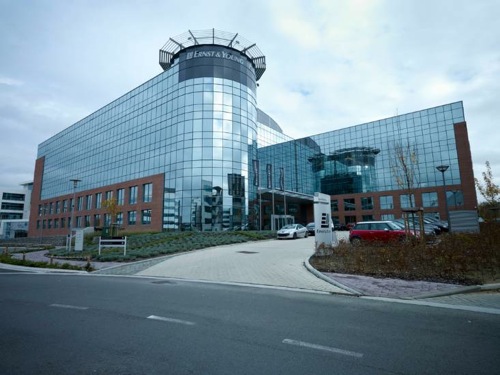
This stunning facility is the Belgian head office of Ernst & Young. The firm, which has made Fortune’s “100 Best Companies to Work For” list 15 years running, recognizes that going green is as much about saving the environment as it is about staying at the top of one’s game.
The facility is outfitted with solar panels that provide 100 percent green energy. And as well as this, there’s a rainwater recycling system to cool the building, plus over 800 movement sensors to control the environments of individual rooms – depending on how many people are inside. When it comes to going green, it’s all about thinking ahead, especially since it often takes longer than the suggested three to five years to pay off the initial investment.
9. Grant Thornton – Houston, USA
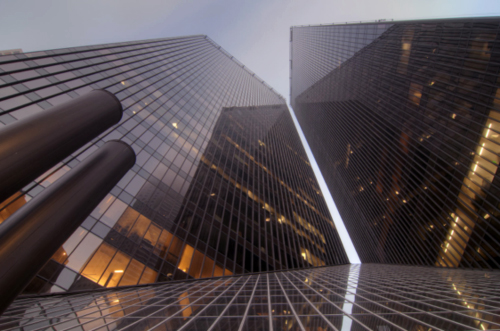
Yes, going green is a long-term investment, and it’s also a great way to ensure that a company is in good shape for the future. In 2012, tax-consulting company Grant Thornton moved 250 of its employees from Houston’s Three Allen Center to new facilities in Pennzoil Place. Although the firm is growing, its new office space is a third smaller than the old location. So to adapt, the company changed its thinking about use of space – and the new location is even more comfortable.
Rather than the executives enjoying sprawling corner offices, each one has a smaller, 100-square-foot office instead. The result is a floorplan that’s more efficient, more collaborative, provides plenty of natural light, and reduces the company’s carbon footprint. Not only that, but the new space, designed by global architectural firm Gensler, aims to achieve LEED (Leadership in Energy and Environmental Design) silver certification.
Grant Thornton has made across-the-board changes in all their other offices as well, reducing paper waste by an entire tree per person, getting rid of disposable cups, and pursuing more and more LEED-accredited spaces. And the icing on the cake is that the firm earned second place in Vault’s 2013 best accounting company rankings.
8. KPMG – London, UK
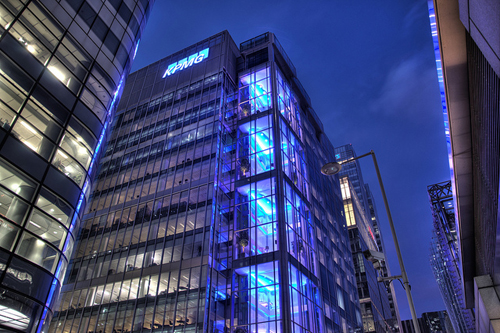
As part of what some architects are calling a green arms race, KPMG constructed a $530 million (£340 million) eco-friendly office in Canary Wharf, London. Opened by Queen Elizabeth II in 2010, the building won an “excellent” rating from BRE Environmental Assessment Method (BREEAM), a world leader in the assessment of environmentally sustainable buildings. The aim was to cut carbon emissions in half – and this has been achieved. Large quantities of recycled materials were used to fit and build the offices. And thanks to gray water harvesting, water use is down considerably.
Although building an eco-friendly building is a huge investment, it’s actually less of a risk than choosing not to get green credentials. Speaking to the BBC, architect Richard Buckingham explained that going green is about building for the future, and that not doing so would be high risk. Besides which, this kind of facility is a draw for employees and often attracts the best people in the profession. What’s more, happy employees mean a great working environment.
7. Plante Moran – East Lansing, USA
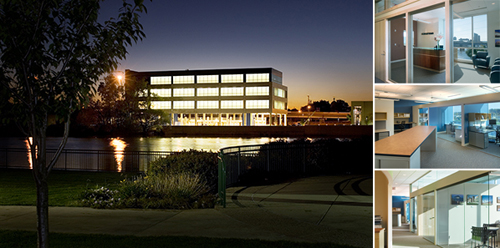
Audit, tax and consulting company Plante Moran is another firm featured on Fortune’s “100 Best Companies to Work For” list. According to Plante Moran, going green is about being “responsible corporate and community citizens.”
The Christman Company completed this LEED-certified building in 2008, designing it to fit seamlessly into the thriving urban landscape of East Lansing, Michigan. It’s outfitted with automatic lighting, alongside innovative design and decor. Plante Moran occupies two floors of the building and strives to reduce waste and paper consumption, among other environmentally friendly initiatives.
6. Reznick Group – Atlanta, USA
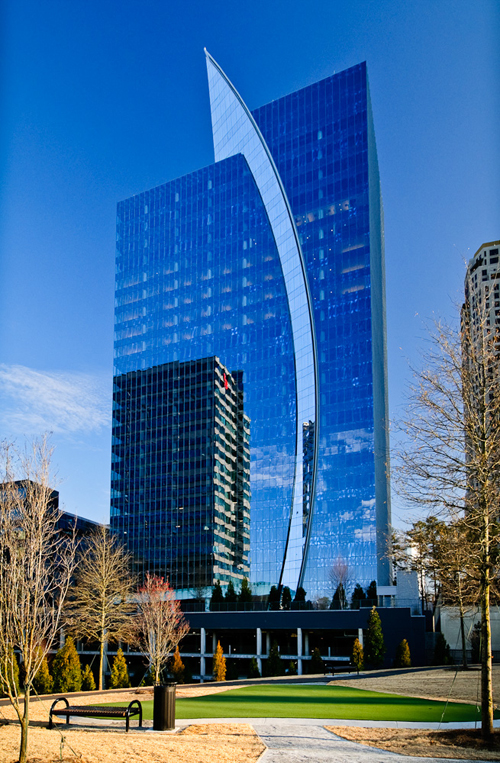
Sometimes, going green doesn’t mean going to the expense of building something entirely new. In 2011, Reznick Group’s Atlanta-based office moved into the LEED Gold-certified Two Alliance Center. The company took over three floors and implemented their own additional eco-friendly initiatives, including installing LED lights, replacing disposable cups with re-usable ones, and using smart conferencing rooms.
Reznick’s office manager, Wes Hudson, was excited about the move and said it was the demographic of the employees and a desire to promote collaboration and team building that most impacted the decision to relocate. With young and passionate staff, the company knew that going green was a smart move.
5. PricewaterhouseCoopers – Toronto, Canada
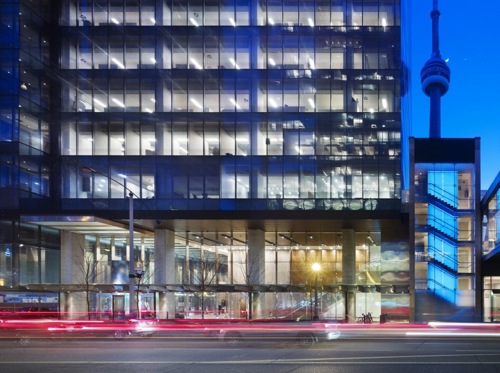
Not only is PricewaterhouseCoopers’ Toronto office hoping to achieve LEED Gold certification, but it also has an entire roof forest on the third floor! The green garden is planted with bushes and trees to avoid stormwater run-off and helps maintain comfortable building temperatures. A graywater retention system also assists with preventing waste.
Most unique of all is the building’s approach to work space. Desks and chairs are reserved like hotel rooms, with employees checking in and out as they come and go. This helps to use space efficiently. Other features include bike racks in the parking lot, a cooling system that utilizes an underwater lake, and sensors that adjust the lighting according to the occupancy of rooms in order to cut down on wasted energy usage.
4. Ernst & Young – Amsterdam, Netherlands
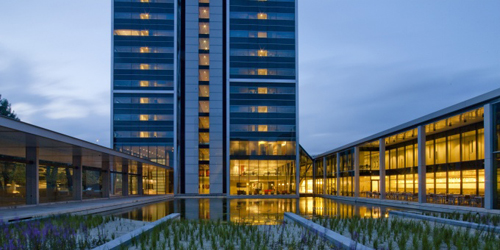
This incredible facility is Ernst & Young’s Amsterdam headquarters. Situated in the Vivaldi park neighborhood of the city’s Zuidas business district, the building is remarkably engineered and boasts impressive environmental efficiency. 75 percent of the building is partially glazed, and the remaining quarter (the north-facing side) is fully glazed. This prevents overheating but still optimizes natural sunlight.
A transparent core increases natural lighting, and ground water is stored to cool the building. A scenic pool surrounded by water-cleansing plants such as grass, reeds and water lilies retains 65 percent of the rain that falls on site. And excess pond run-off goes straight into the Amsterdam canal.
Besides exceeding Dutch environmental standards by an impressive 10 percent, the building also sounds like a wonderful place in which to work. It has great city views, airy social spaces, and lots of sunlight. What more could you want?
3. KPMG – Frederiksberg, Denmark
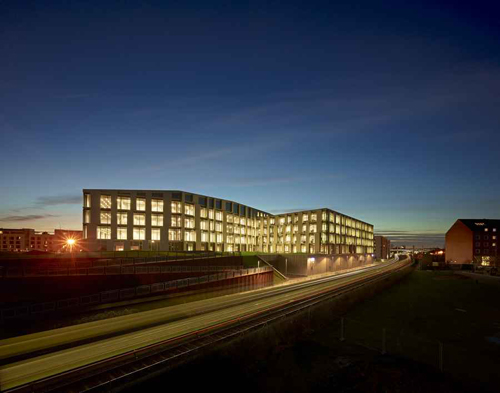
KPMG’s office space in Frederiksberg, Denmark is cutting edge, subtle and discreet. Not only that, but its energy consumption amounts to practically nothing. The building was designed by Copenhagen-based architectural company 3XN and employs a cloverleaf design with footbridges to promote communication between departments.
Lighting is automatically adjusted, and innovative glass facades make the building bright while dispersing heat to maintain energy efficiency. What’s more, it must work, because the office’s energy use is far lower than Danish maximum energy consumption levels.
A rainwater collection system waters the surrounding park. And to encourage eco-friendly commuting, KPMG outfitted the building with a 700-bicycle parking area. Employees with electric cars, meanwhile, can charge their vehicles in the basement whilst they work.
2. Deloitte Centre – Auckland, New Zealand
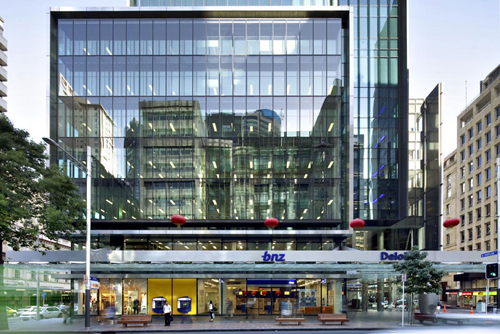
Covering an entire city block, accountancy firm Deloitte’s Auckland office is both innovative and comfortable, despite its older, more historic surroundings. Architectural firms Woods Bagot and Warren and Mahoney collaborated to design the office block, which incorporates a restored, heritage-listed building constructed in the 1940s. In addition to its respectful blending of the old and the new, the building was the first commercial high-rise in New Zealand to be awarded five-Green Star accreditation by the country’s Green Building Council.
Cool air is drawn into the building at the base, while hot air escapes at the top. This, combined with high-performance glazing, helps to keep the internal temperature comfortable in all seasons without consuming a lot of energy. Employees are encouraged to bicycle to work, and according to Inhabitat.com, an impressive 73 percent of workers know how to use all the green features. Better yet, 90 percent of them say they like working there.
1. PricewaterhouseCoopers – London, UK
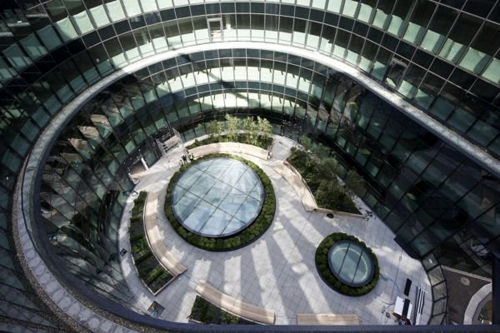
Not long after KPMG opened their “excellent” BREEAM-rated offices in London, PricewaterhouseCoopers went one better, winning an “outstanding.” PricewaterhouseCoopers’ London facility, located on the bank of the River Thames, is a masterpiece of sustainable engineering. Natural daylight is maximized, and the management refuses to utilize virgin fuel to power the building. Their alternative is to use generators that run on 45,000 liters (nearly 12,000 gallons) of used cooking oil a month, providing 25 percent of the building’s power. And these impressive green credentials make it the UK’s top-rated eco-office building.
All these innovative and creative design solutions didn’t come without expense, of course. The 10-story building cost $102 million (£65m). But the firm’s UK building manager, Jon Barnes, insists that the money is worth it. With 70 percent of company employees under the age of 35, the building’s eco-friendly elements are sure to attract a younger demographic.
